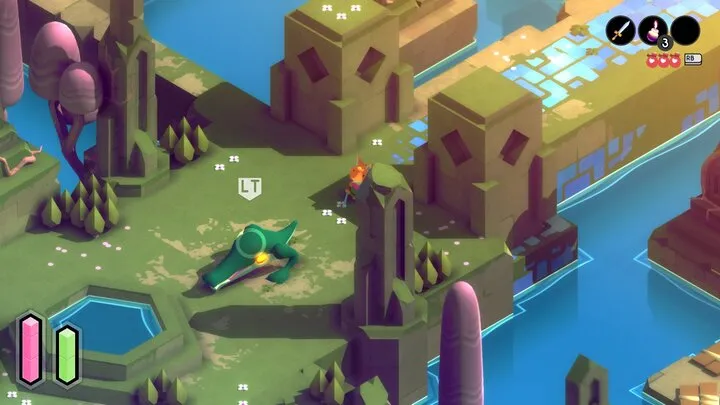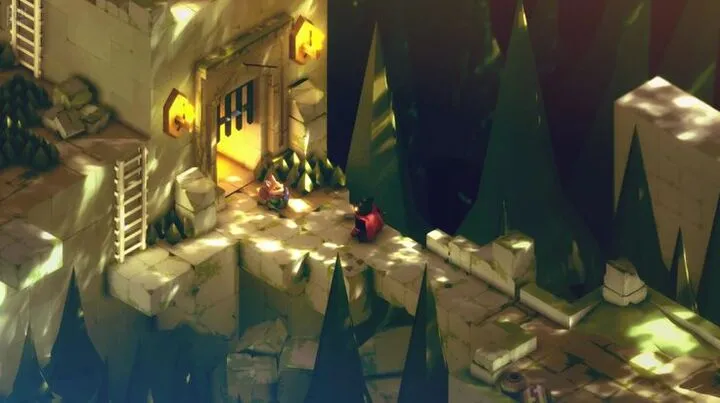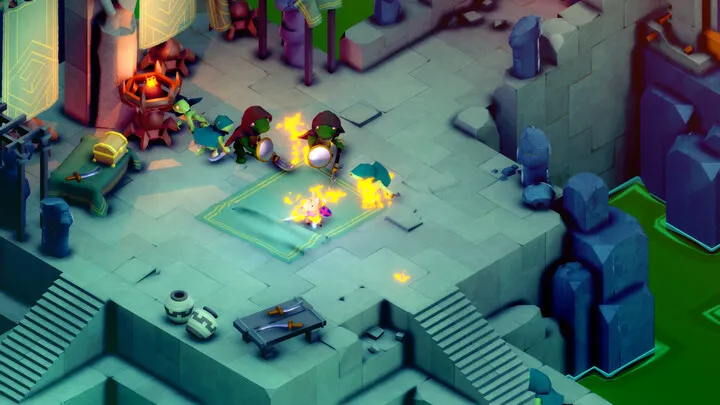TUNIC is a deceptively charming game filled with mystery, exploration, and challenges that push players to their limits. Among its most intense trials are the boss battles, which combine puzzle-like strategies with demanding reflexes. These encounters are not just about swinging your sword blindly; they require preparation, observation, and mastery of the game’s unique mechanics. In this guide, we’ll dive deeply into the strategies you need to survive and conquer every boss fight in TUNIC, arranged in a way that builds your skills step by step.

Preparing for Your First Boss Encounter
Before diving into combat, preparation is crucial. Bosses in TUNIC often punish careless players who rush in unready. Stocking up on healing potions, learning how stamina works, and understanding the basics of blocking and dodging set the stage for success.
Exploration is your first weapon. Search every corner of the overworld for hidden chests that contain health upgrades, stamina boosts, and extra flasks. These items often make the difference between barely surviving and confidently controlling the fight. Think of preparation as the first phase of every boss battle.
Understanding Attack Patterns
Every boss in TUNIC follows a set of patterns that repeat throughout the fight. While the designs may look overwhelming at first, careful observation reveals openings where you can safely attack.
Study the timing of each swing, lunge, or projectile attack. Many bosses intentionally delay their strikes to catch hasty dodges, so patience is key. Waiting until the attack animation fully commits before rolling ensures you’ll avoid damage and be in position for a counter. Learning these rhythms is the foundation of surviving every encounter.

Mastering Dodge and Roll Mechanics
Dodging in TUNIC isn’t just about moving out of the way—it’s about precise timing. Your roll grants invincibility frames (i-frames), meaning you’re briefly untouchable during the animation. The key is rolling into attacks rather than away from them.
For example, if a boss swings horizontally, dodging toward them allows you to pass through the attack and end up behind them for a free strike. Rolling too early, however, cancels your invulnerability, leaving you wide open. Practice rolling through smaller enemies to sharpen your reflexes before testing your skills against bosses.
Balancing Aggression and Defense
Boss fights are not marathons of constant offense. Many players fail because they swing their sword without restraint, draining stamina and leaving themselves unable to dodge or block when needed. Stamina management is just as important as dealing damage.
The trick is to use short combos of one or two strikes, then retreat to regain stamina. Always keep a reserve of stamina in case you need to dodge a sudden attack. This balance of attack and defense transforms you from a reckless adventurer into a calculating strategist.
Using the Manual’s Hidden Hints

One of TUNIC’s most unique features is its in-game manual, which often provides subtle hints for defeating bosses. Pages hidden across the world contain cryptic notes and diagrams that reveal weaknesses or strategies for specific encounters.
For instance, certain bosses are vulnerable to elemental magic, while others require specific positioning to avoid devastating attacks. Taking the time to decode these pages rewards you with insights that make the seemingly impossible feel manageable. Treat the manual as part of your arsenal, just like your sword or shield.
Optimizing Your Equipment Loadout
The gear you choose before battle can drastically change the fight’s outcome. While the sword is your main weapon, experimenting with secondary items such as bombs, magic spells, or upgraded shields can provide the edge you need.
For example, fire bombs are particularly effective against enemies weak to burn damage, while the magic wand allows you to deal damage from a distance when it’s too risky to close in. Switching items mid-battle may feel hectic at first, but it can turn the tide in difficult fights. Always consider your equipment as a flexible toolkit.
Identifying Weak Points
Every boss in TUNIC has weak points that players can exploit. These aren’t always obvious—sometimes it’s a brief animation recovery, while other times it’s a specific glowing spot on their body.
Observation is once again your ally. Wait for the boss to overextend, strike, and then retreat. Over time, you’ll recognize consistent vulnerabilities you can target. Exploiting these weaknesses not only deals more damage but also helps you conserve resources for the longer phases of the fight.
Staying Calm Under Pressure
TUNIC bosses are designed to overwhelm. Their fast attacks, large arenas, and unpredictable transitions often lead to panic. But staying calm is perhaps the most important survival tip.
Take deep breaths between dodges, and remember that learning is part of the process. Many players need multiple attempts before fully understanding a boss’s behavior. The calmer you remain, the more you’ll notice patterns and openings, allowing you to respond with precision rather than desperation.

Recovering from Mistakes
Even the best players make mistakes—what matters is how you recover. Losing half your health bar to one mistake doesn’t mean the fight is lost. Healing strategically is the key. Don’t heal in panic; instead, wait for the boss to enter a long animation or recover from a big attack.
Accept that every failure is progress. Each defeat teaches you something about timing, strategy, or positioning. With persistence, even the toughest bosses eventually fall.
Final Boss Strategies and Beyond
The final bosses of TUNIC demand mastery of everything you’ve learned. These encounters combine complex patterns, unpredictable attacks, and punishing damage. Victory requires not only technical skill but also a deep understanding of every system.
Here, patience and discipline are your greatest strengths. Don’t rush the ending out of excitement—stick to the methods that carried you this far: observe, dodge, exploit weaknesses, and heal wisely. Defeating the final bosses isn’t just about beating the game; it’s proof that you’ve grown as a player, turning confusion into mastery.
Conclusion
Boss battles in TUNIC are more than simple tests of strength—they’re lessons in patience, observation, and adaptability. By preparing carefully, studying attack patterns, and using every tool at your disposal, you’ll transform each daunting fight into a thrilling victory. With practice and persistence, even the hardest encounters become opportunities for growth.

















